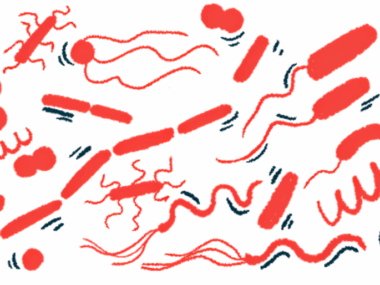Dopamine’s rapid release key for motivation, less so for movement
Study could help to explain why levodopa aids motor skills, but not cognition
Written by |

A rapid release of the chemical messenger dopamine in the brain is not needed for initiating movement, while it’s important for motivation and reward-seeking behaviors, according to a study in mice.
If these findings hold true in patients, they may help in explaining why levodopa or L-DOPA, a mainstay treatment, can ease Parkinson’s motor symptoms but does not fully address the disease’s nonmotor symptoms, such as challenged cognition.
“Sooner or later, most patients with Parkinson’s get prescribed L-DOPA,” Pascal Kaeser, MD, who led the study at Harvard Medical School, said in a university news story. “Our findings will help researchers to think about how they could ameliorate the cognitive problems seen in this disease by developing therapies that lead to faster and more precise dopamine signaling.”
The study, “Dopamine dynamics are dispensable for movement but promote reward responses,” was published in Nature.
Dopamine’s actions in various signaling modes is not well understood
In Parkinson’s, dopamine-producing neurons (nerve cells) die over time, leading to a range of disease symptoms. Dopamine is a neurotransmitter, meaning it acts as a chemical messenger among neurons, and is considered essential for motor control and learning. For years, it’s also been thought that movement relies on a rapid release of dopamine, initiating a quick firing of signals between these nerve cells.
“If you read up on modern dopamine neuroscience, one conclusion … is that dopamine may act as a fast neurotransmitter to trigger and modulate movement, yet our study shows that’s not the case,” said Kaeser, who’s a professor of neurobiology in the Blavatnik Institute at Harvard Medical School.
To test the role of rapid dopamine release in movement — whose initiation can be difficult for people with Parkinson’s, causing them to “freeze” for some moments — Kaeser’s team turned to genetically modified mice lacking a protein called RIM, which is needed for dopamine to be released rapidly.
Measuring dopamine levels in the brains of mice lacking RIM, they found an almost complete lack of a rapid, precise release of dopamine compared with wild-type (unaffected) mice.
Interestingly, mice lacking RIM could initiate movement, indicating that fast dopamine action is not needed for this basic motor function. However, when dopamine was depleted or its receptors blocked, the mice had more difficulty with starting to move, showing that some dopamine is needed.
Rapid dopamine release may be important in cognitive issues like motivation
When it came to reward-based behaviors, results were different. Mice lacking RIM learned to recognize cues and rewards, but they showed less motivation and vigor during reward-related tasks than wild-type mice. They performed the tasks more slowly and less eagerly, suggesting that fast dopamine action is essential for cognitive-oriented tasks like motivation and reward-seeking.
“Although mice with disrupted dopamine dynamics can learn to make reward-based decisions, they have strongly impaired behavioural responses to anticipated rewards,” the researchers wrote.
Levodopa works by providing the body with a precursor molecule that can be used to produce dopamine. When injected into mice whose dopamine had been depleted, resulting in uncontrolled movements, these animals regained motor control. But rapid dopamine dynamics, which the study found to be key for motivation, did not return, the scientists noted.
“Understanding the mechanisms of L-DOPA is important because patients with Parkinson’s disease rely on this treatment,” the researchers wrote. “However, L-DOPA treatment is not effective for all Parkinson’s disease symptoms, and side effects develop over time, probably because L-DOPA does not restore the regular modes of dopamine transmission.
“Aberrant dopamine fluctuations, constant dopamine receptor activations or adaptations … might induce dyskinesias [uncontrolled movements],” they added.
“Our work gets at the heart of the mechanism of L-DOPA action in movement,” said Xintong Cai, PhD, the study’s first author and a former research fellow in neurobiology at the Harvard school. “Our findings confirmed that L-DOPA enhances movement, but it does so without restoring rapid dynamics in the model we used.”






